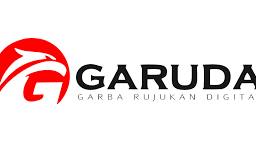Analisis Kemampuan Keruangan Ditinjau Dari Motivasi Belajar Pada Pokok Bahasan Bangun Ruang Sisi Datar
DOI:
https://doi.org/10.32585/absis.v7i1.6045Abstract
This study aims to describe students' spatial geometry abilities in terms of their learning motivation and to detail the achievement of each indicator of students' spatial abilities. The research method used is descriptive qualitative. Data collection techniques in this study include written tests, simple interviews, and observations. The research was conducted with 35 students, from which 6 students were selected based on certain characteristics: high, medium, and low. The spatial ability test results of these 6 students were then analyzed in relation to their learning motivation.
The results of the study indicate that high learning motivation can significantly influence students' geometry skills, particularly their spatial abilities. This means there is a correlation between spatial ability and students' learning motivation, where students with high motivation tend to have a stronger drive and need for learning.
Downloads
References
Ali, S., Moonti, U., Irwan Yantu, I.,(2022). Pengaruh Motivasi Dan Kemandirian Belajar Terhadap Hasil Belajar Siswa Pada Mata Pelajaran IPS Terpadu Kelas VIII Di SMP Negeri 1 Bulango Utara Kabupaten Bone Bolango
Anwar, A. (2020). Identifikasi Tingkat Berpikir Geometri Siswa Berdasarkan Teori Van Hiele. Jurnal Pendidikan Matematika (JUDIKA EDUCATION), 3(2), 85–92. https://doi.org/10.31539/judika.v3i2.1616
Budiman, H., & Rosmiati, M. (2020). Penerapan Teori Belajar Van Hiele Berbantuan Geogebra untuk Meningkatkan Kemampuan Penalaran Matematis Siswa. Prisma, 9(1), 47. https://doi.org/10.35194/jp.v9i1.845
Dewi, D. K., Khodijah, S. S., & Setiawan, W. (2020). Analisis Motivasi Belajar Matematika Siswa SMA Bingkai Cendekia Cicilan Berbantuan Aplikasi GeoGebra pada Materi Transformasi Geometri. Jurnal Pembelajaran Matematika Inovatif, 3(1), 49–58. https://doi.org/10.22460/jpmi.v3i1.p49-58
Hasibuan, E. K., Rambe, N. A., & Saleh, S. (2021). Penerapan Model Pembelajaran Discovery Learning Untuk Meningkatkan Motivasi Belajar Dan Hasil Belajar Matematika Siswa Kelas Viii Mts. AXIOM: Jurnal Pendidikan Dan Matematika, 10(1), 61. https://doi.org/10.30821/axiom.v10i1.8532
Kristanto, Y. D., Taqiyuddin, M., Yulfiana, E., & Rukmana, I. (2022). Matematika Matematika SMP/MTs Kelas IX. https://buku.kemdikbud.go.id
Kurnia, A. N., & Nita Hidayati. (2022). Analisis Kemampuan Berpikir Geometri Berdasarkan Tahap Berpikir Van Hiele Pada Pembelajaran Matematika Siswa Smp. EduMatSains: Jurnal Pendidikan, Matematika Dan Sains, 6(2), 419–430. https://doi.org/10.33541/edumatsains.v6i2.3618
Meilinda, N. V., Nuraisyah, L. F., & Senjayawati, E. (2019). Implementasi Media Pembelajaran Menggunakan Aplikasi Macromedia Flash 8 Pada Materi Bangun Ruang Sisi Datar. Jurnal On Education , 1(3), 515–524.
Sakiah, N. A., & Effendi, K. N. S. (2021). Analisis Kebutuhan Multimedia Interaktif Berbasis PowerPoint Materi Aljabar Pada Pembelajaran Matematika SMP. JP3M (Jurnal Penelitian Pendidikan Dan Pengajaran Matematika), 7(1), 39–48. https://doi.org/10.37058/jp3m.v7i1.2623
Santos, M. S. M. D., Sobretodo, M. L., & Hortillosa, A. D. (2022). The Van Hiele Model in Teaching Geometry. World Journal of Vocational Education and Training, 4(1), 10–22.
Setyawan, D., & Suryaningsih, I. (2019). Eksplorasi Proses Konstruksi Mahasiswa dalam Memecahkan Masalah Geometri Bidang ditinjau dari Kemampuan Keruangan. 2, 62–73.
Sholihah, S. Z., & Afriansyah, E. A. (2018). Analisis Kesulitan Siswa dalam Proses Pemecahan Masalah Geometri Berdasarkan Tahapan Berpikir Van Hiele. Mosharafa: Jurnal Pendidikan Matematika, 6(2), 287–298. https://doi.org/10.31980/mosharafa.v6i2.317
Susanto, S., & Mahmudi, A. (2021). Tahap berpikir geometri siswa SMP berdasarkan teori Van Hiele ditinjau dari keterampilan geometri. Jurnal Riset Pendidikan Matematika, 8(1), 106–116. https://doi.org/10.21831/jrpm.v8i1.17044
Downloads
Published
How to Cite
Issue
Section
License
Copyright (c) 2025 Seruni Anggreani, Dori Lukman Hakim

This work is licensed under a Creative Commons Attribution-ShareAlike 4.0 International License.
Authors who publish with the Absis: Mathematics Education Journal agree to the following terms:
- Authors retain copyright and grant the journal the right of first publication with the work simultaneously licensed under a Creative Commons Attribution License (CC BY-SA 4.0) that allows others to share the work with an acknowledgment of the work's authorship and initial publication in this journal.
- Authors are able to enter into separate, additional contractual arrangements for the non-exclusive distribution of the journal's published version of the work (e.g., post it to an institutional repository or publish it in a book), with an acknowledgment of its initial publication in this journal.
- Authors are permitted and encouraged to post their work online (e.g., in institutional repositories or on their website) prior to and during the submission process, as it can lead to productive exchanges, as well as earlier and greater citation of published work.







